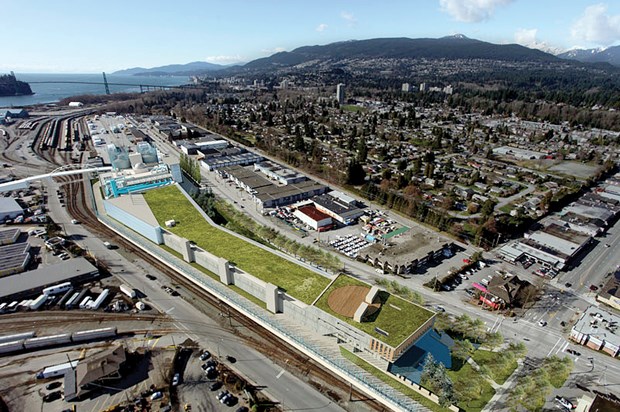It’s a big-spending budget and a sizable chunk of it will be spent on some high-priority projects for the North Shore.
Finance Minister Bill Morneau delivered the 2016 federal budget in Parliament Tuesday afternoon, projecting a $29.4-billion deficit for the fiscal year ahead.
Among the local highlights is $212 million towards the $700-million Lions Gate Wastewater Treatment Plant.
“It feels amazing. We really needed that money,” said City of North Vancouver Mayor Darrell Mussatto, also chairman of the Metro Vancouver utilities committee. “It would have been a huge financial hit on the local taxpayers, so the support of the federal government is nothing short of amazing.”
So far, the regional government has already spent approximately $20 million on engineering, public consultation and preliminary designs for the new sewage plant, which the previous federal government mandated be online by the end of 2020. If the province comes through with its share “in the next couple months,” that deadline will still be achievable, Mussatto said.
On the transportation issue, Mussatto is welcoming $3.4 billion over three years for transit upgrades. That comes with a shift from the old formula of having Ottawa, the province and the municipalities share equally in the cost of transit infrastructure.
“We understand that the municipalities have a very limited tax base and so the point of this is to explore whether we can enable some of these projects by perhaps being a little bit more thoughtful about the funding formula,” said North Vancouver Liberal MP Jonathan Wilkinson.
But, even with the feds covering up to 50 per cent of costs, municipalities will be on the hook for 17 per cent. There’s still no agreement on how that can be raised by the municipalities, although Mussatto said he will not support that coming from property taxes.
Mussatto said he was also keen to see spending on affordable housing initiatives, including $13.1 million for construction of affordable rental housing in 2016-2017 and another $72.6 million in the next fiscal year. Mussatto said he hopes that takes the form of past incentives for developers to build more rental units. Those incentives were largely chopped in the 1980s and ’90s and the building of rental housing effectively stopped.
“A lot of the three- and four-storey walk-ups were built with federal government support and tax incentives. I think that’s a really logical way to do that. Municipalities have almost no financial capability to get into affordable housing,” he said.
Also of local interest is $23.6 million over five years to reopen and enhance the Kitsilano Coast Guard Base to a point where it will have higher marine emergency response capacity than it had when it was shut down by the Conservatives.
For those not keen on the higher debt levels, Wilkinson said he expects the spending will drive growth and help return the government to balanced budgets in the future.
“This will pay off down the road in the context of future higher growth rates, which will make it easier to balance the budget,” he said, adding he expects the debt-to-GDP ratio will fall.
“Right now, the time is not for restraint. The time is for investing when interest rates are low, when we have enormous infrastructure needs and by making those investments, we can actually enhance the productivity of the Canadian economy.”
Click on the link below to look at the federal budget PDF.



